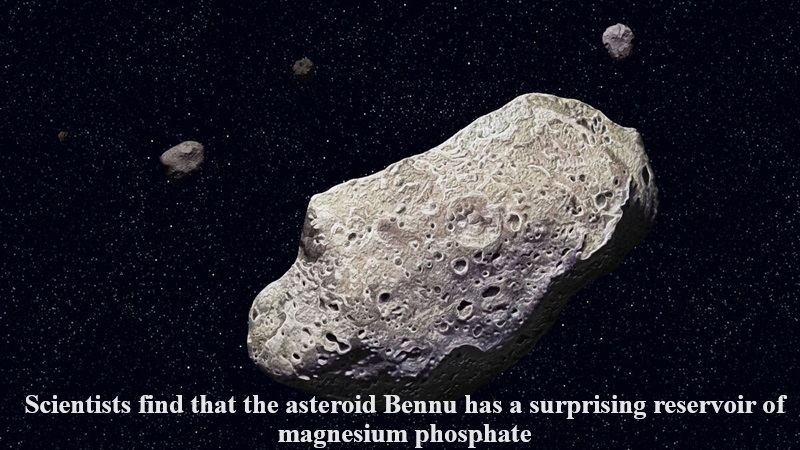
Four years after retrieving a sample from the asteroid Bennu with NASA’s OSIRIS-Rex spacecraft, scientists have finally unraveled the intriguing composition of this space rock.
Their analysis revealed an unexpected presence of magnesium phosphate, a mineral that stands out amidst Bennu’s predominantly dark rocks. These bright-white particles represent a rare find in astromaterials, initially raising concerns of contamination.
Jessica Barnes, an assistant professor at the Lunar and Planetary Laboratory (LPL) leading the phosphate analysis, expressed surprise at the discovery. She noted that there are no good chemical analogues of this mineral on Earth, either because it quickly degrades or because surviving specimens are exceptionally rare.
At the Lunar and Planetary Science Conference (LPSC) in Texas, Barnes discussed how the presence of minerals in Bennu’s sample offers insights into the asteroid’s parent body’s geological history. The widespread occurrence of glycine, the simplest amino acid and a crucial protein component, along with water-bearing minerals like magnetite, sulfites, olivine, and carbonates, indicates multiple water-related events on Bennu’s progenitor before its fragments coalesced into the asteroid.
Additionally, scientists studying this extraterrestrial bounty discovered abundant phyllosilicates, compounds altered by water, alongside a diverse array of hydrated and organic minerals. These findings shed light on the complex processes that shaped Bennu and its parent body over time.

Post Your Comments